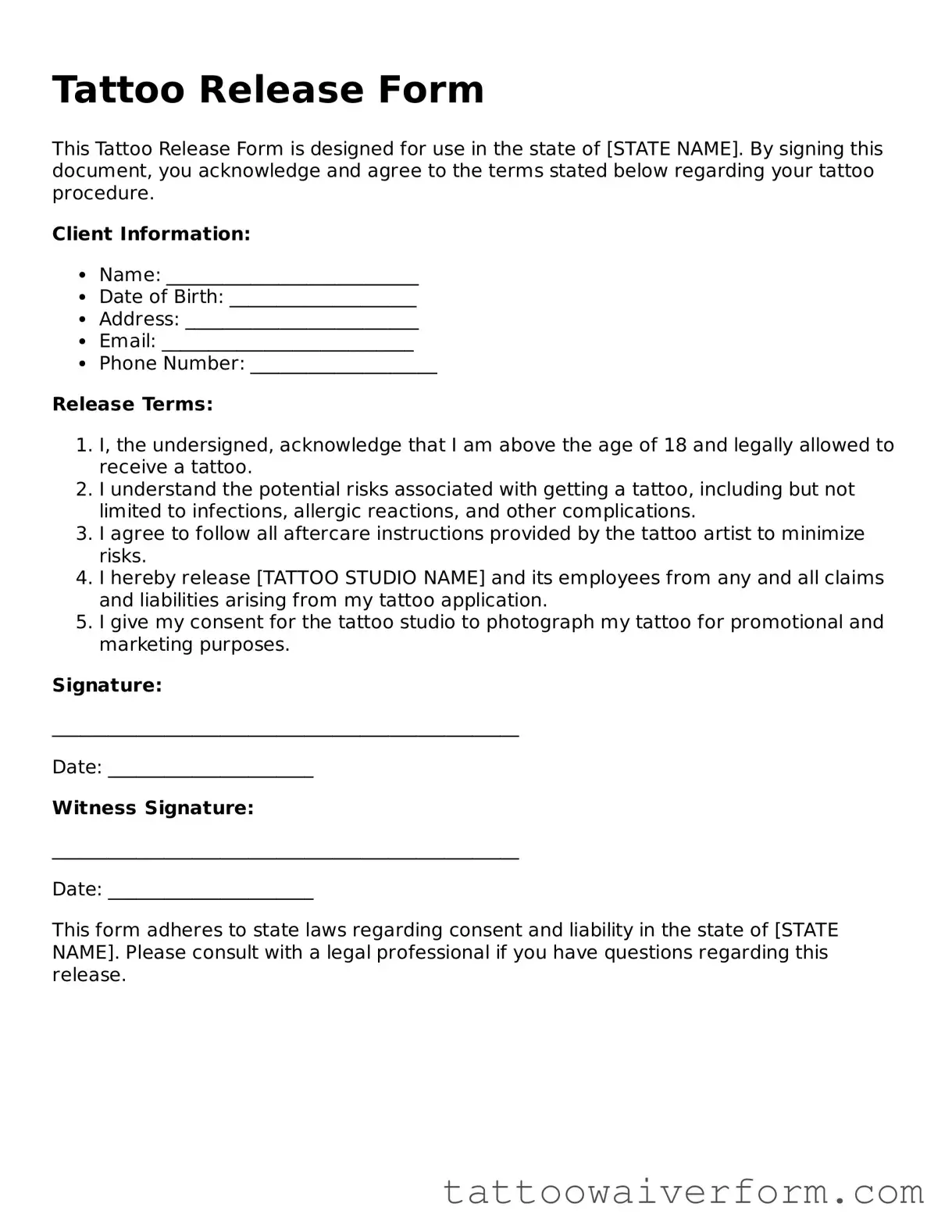Filling out a Tattoo Release form may seem straightforward, but many people make common mistakes that can lead to complications later. Understanding these errors can help ensure that your form is completed correctly and protects your rights.
One frequent mistake is not providing accurate personal information. Ensure your name, address, and contact details are correct. An error here could lead to issues if you need to reach out for follow-up questions or if any disputes arise.
Another common error is failing to read the entire form before signing. Many individuals rush through the process, missing important clauses. Take the time to understand what you are agreeing to, especially regarding how your tattoo may be used in promotional materials.
Some people neglect to check the consent section. This part of the form usually requires you to confirm that you understand the implications of getting a tattoo. If this section is incomplete, it may invalidate the release.
Inaccurate descriptions of the tattoo can also be problematic. When filling out the form, be specific about the design and placement. A vague description can lead to misunderstandings about what you have authorized.
Many forget to sign and date the form. Without a signature, the release has no legal standing. Likewise, failing to date it can create confusion about when consent was given.
Another mistake is not asking questions if something is unclear. If you don’t understand a term or section, seek clarification. Ignoring confusion can lead to unforeseen consequences.
Some individuals overlook the importance of keeping a copy of the completed form. Always retain a copy for your records. This can be crucial if any disputes arise regarding the tattoo or its use.
Lastly, many people fail to review the form for any additional requirements specific to the tattoo studio. Some studios may have their own guidelines or additional paperwork that must be filled out alongside the release form.
By being aware of these common mistakes, you can ensure that your Tattoo Release form is filled out correctly, protecting both your rights and the artist's work.
